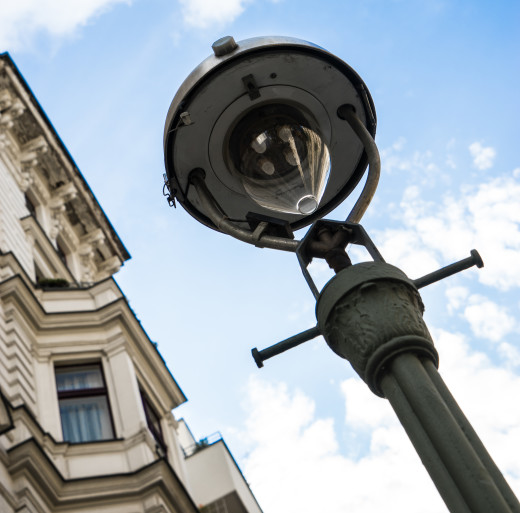Seeing the light – a revolution in illumination
For most of us, most of the time, having enough light to see, read or do whatever is not a problem. If there is no available daylight, because of the time of day or our location, we just press a switch. Let there be light! But, of course, it was not always that easy. The invention of fire was, I suppose, the first artificial light – though that was not its main attraction/function.
For the most part, light was simply available from the sun …
Just having daylight is problematic. It is light only about half of the time [if you do not count moonlight] and that may be variable through the year, depending on where you live. So, the invention of artificial light was rather inevitable. For many centuries – millennia even – wax/oil based lighting was the only option. This was quite easy to implement, as various hydrocarbons tended to be available from animal, vegetable or mineral sources.
Life did not become much easier until the 19th Century, when gas supplies began to be installed in towns and cities. This provide a very effective light source. Instead of just relying on the light from a flame – a gas flame would be rather disappointing – the heat is used to make a mantle glow white. Some early designs used a radioactive material for the mantle, which sounds worrying; it was actually quite safe for users, but manufacturing was hazardous. The convenience of gas lighting made it very popular in homes and it was installed by anyone who could afford it. In many cities, street lighting was also installed, with a team of guys employed to light and extinguish all the lamps.
The electric light changed everything. Most people think of Edison as being the inventor of the lightbulb, but its history is far more complex than that, with many researchers making contributions. The first practical example was demonstrated in the early 1800s, but it was not until the end of the century that it became an economic option. The first light bulbs were filaments and they have been in very wide use until recently. During the 20th Century, various other electric lighting technologies came along: fluorescent [tubes], sodium vapor, mercury vapor and halogen are familiar examples.
Recently, there has been an increasing concern about the efficiency – or lack thereof – of lighting. The initial response was the introduction of CFL [Compact Fluorescent Lamp] technology, which has been made cheaply available in some countries to encourage take up. This encouragement was necessary, as these bulbs were really not very good. They took ages to “warm up” and never seemed bright enough. Sadly, some governments [notably in Europe] banned the sale of regular filament bulbs as further “encouragement” to use CFLs.
Unfortunately, all these measures were premature, as a suitable lighting technology to replace “real” bulbs was not yet ready for the mass market. Now it is. There was an announcement this week that IKEA will soon discontinue the supply of all bulbs except LEDs, citing the fact that this technology has reached a “tipping point”. I am generally an IKEA fan and this only reinforces my positive attitude to them. They are brave making this move, but it is the right thing to do. I realized that LED bulbs made economic [and aesthetic and safety] sense a while back and replaced every light in my house with an LED unit. This would be a story in itself, but it was mainly a matter of sourcing a whole lot of bulbs. I did an interesting calculation: if I switched on every single light in my house – and there are a lot, as it is quite a big house – I would be consuming less than 600w, even though, in every case, the room lighting is at least as bright as it was before.
It is interesting how the old technologies will not go away. Many people [myself included] stockpiled filament bulbs before they were banned to avoid using CFLs for a while. Elsewhere I have seen many “vintage” style filament bulbs used for ambiance. [You can even get LED bulbs that look like filament bulbs!] But there is an even older technology that lurks. I was in a pub not long ago, waiting at the bar to be served. My head felt oddly warm. I looked up and there was the source of a hissing sound that I had also noticed. The place had gas lighting.

Gas lighting in streets is surprisingly common. In the town where I live, which has some rich Victorian history, there are dozens of recently-restored gas lights. They have a high-tech ignition system, which switches them on and off according to the light levels and ensures that they run efficiently. However, I notice many of them burning merrily during the day. So much for the modern electronics! It is also noticeable that the lamps have the two bars that would have once supported the lamplighter’s ladder; now it is for maintenance and repair

My wife and I enjoy visiting Berlin. It is cheap for us to get to, an interesting place and we have friends there. In fact, we are going there again soon. On one occasion, we took a historic tour [by bicycle] and the guide was explaining that, until the mid-1930s, a large part of the city had gas lighting. This all changed when the Man In Charge demanded that they were replaced with the latest electric lights so that everyone visiting for the Olympics would see what a go-ahead country Germany was. I asked the guide: when were the lights converted back to gas? He was confused, until I pointed to the lamp fitting right above his head, which was clearly gas. He had no answer for me. 🙂

